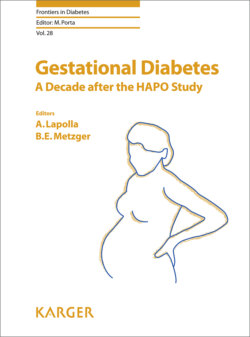Читать книгу Gestational Diabetes - Группа авторов - Страница 11
На сайте Литреса книга снята с продажи.
Background: Categories of Diabetes Mellitus
ОглавлениеAretus the Cappadocian (81–133) produced the first clear written description of the condition now known as diabetes mellitus (diabetes) in the 1st century [1–4]. He referred to the condition as “diabainein” meaning “a siphon” that referred to the associated polyuria. In modern practice, diabetes represents a series of metabolic conditions associated with hyperglycemia and caused by defects in insulin secretion, sometimes exacerbated by defects in insulin action [5]. Typically, we categorize diabetes into 4 groups: type 1 diabetes, type 2 diabetes, other specific types of diabetes, and gestational diabetes mellitus (GDM; Table 1) [6]. In type 1 diabetes, there is destruction of the pancreatic beta cells leading to absolute insulin deficiency, and this process is frequently associated with autoimmunity [7]. Type 2 diabetes is a complex metabolic disorder associated with beta-cell dysfunction and varying degrees of insulin resistance [8]. The third category, “other specific types of diabetes,” include forms of diabetes for each of which the underlying defect or disease process can be identified [6]. The most common of these is maturity-onset diabetes of the young, a familial form of diabetes inherited in an autosomal dominant manner and associated with mutations in certain beta-cell or hepatic genes such as glucokinase [9]. Finally, GDM may be defined as carbohydrate intolerance resulting in hyperglycemia of variable severity with onset or first recognition during pregnancy, excluding those with diabetes in pregnancy likely to represent overt diabetes mellitus [6, 10].
Table 1. Categories of Diabetes mellitus [6]
